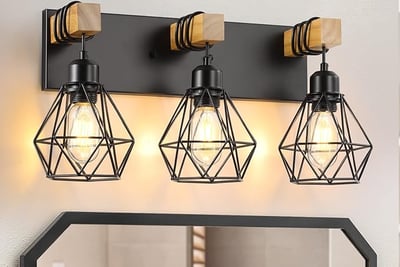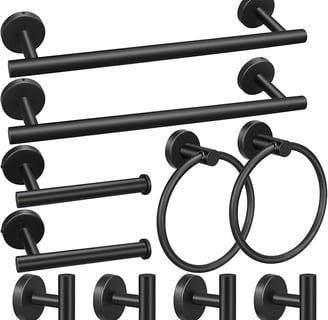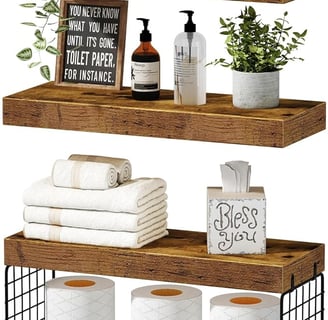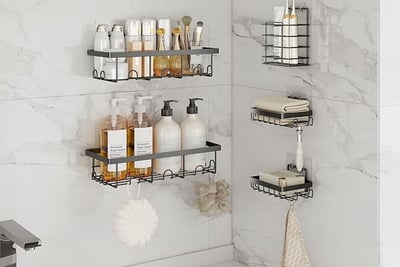Transform Your Space: A Comprehensive Guide to Upgrading Your Bathroom
8 min read

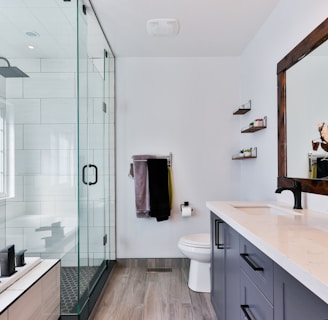
Understanding the Importance of Bathroom Upgrades
Upgrading your bathroom is a strategic decision that can yield significant returns on investment, both in terms of aesthetics and value. The bathroom, often considered one of the most essential spaces in a home, serves multiple functions—ranging from personal grooming to relaxation. Enhancing this area can provide a fresh, invigorated atmosphere that improves your daily routines. A well-designed bathroom fosters a sense of comfort and tranquility, essential for unwinding after a long day.
Moreover, a renovated bathroom can significantly elevate the overall appeal of your home. Prospective buyers frequently prioritize upgraded bathrooms when evaluating properties; a modern, aesthetically pleasing bathroom can serve as a persuasive selling point. Buyers are more likely to envision themselves in a home that features luxurious finishes, upgraded appliances, and thoughtful layouts. Thus, investing in bathroom renovations not only enhances your living experience but can also contribute to a higher resale value, making it a wise financial decision.
From a practical standpoint, bathroom upgrades can also lead to decreased long-term maintenance costs. Aging fixtures often require more upkeep, leading to unexpected expenses over time. By replacing outdated plumbing, tiles, and appliances with newer, more efficient options, homeowners can mitigate repairs and conserve resources. Energy-efficient fixtures, for instance, can lead to lower utility bills and a reduced environmental footprint. Additionally, choosing durable materials can enhance the bathroom’s longevity, thereby decreasing the frequency of future renovations.
Overall, the impact of a bathroom upgrade extends beyond mere aesthetics. It enhances comfort, serves as a strong selling point for future buyers, and can reduce long-term costs associated with maintenance. Upgrading your bathroom is, therefore, a valuable investment that ultimately improves the quality of life within your home.
Exploring Peel-and-Stick Tiles: An Affordable Makeover
Peel-and-stick tiles have emerged as an innovative and practical solution for homeowners seeking to upgrade their bathrooms without undertaking extensive renovations. These tiles are not only cost-effective but also incredibly versatile, making them an ideal choice for those looking to refresh their space with minimal effort. One of the most significant advantages of peel-and-stick tiles is their ease of installation. Unlike traditional tiles that require adhesives, grout, and professional installation, these tiles can be applied directly to a clean, flat surface. This feature allows homeowners to achieve a new look in a fraction of the time and at a fraction of the cost.
When it comes to design, peel-and-stick tiles offer an extensive range of styles, colors, and patterns, ensuring that one can easily find a design that complements existing decor. From classic subway tiles to intricate mosaic patterns, the variety enables individuals to personalize their bathrooms according to their tastes. This adaptability not only enhances aesthetic appeal but also allows for seasonal or trend-based updates without significant investments.
Selecting the right peel-and-stick tiles involves considering factors such as color schemes, texture, and the overall theme of the bathroom. For cohesive design, it is advisable to take samples of potential tiles to see how they interact with other elements, such as cabinetry and fixtures. After making a selection, proper preparation of the installation surface is essential. A smooth and clean base will allow for better adhesion and longevity of the tiles. The application process is straightforward; simply peel the backing, align the tile, and press it onto the surface. This method not only simplifies the renovation process but also allows individuals to achieve professional-looking results in their bathrooms.
Upgrading Bathroom Fixtures for a Modern Look
Bathroom fixtures play a crucial role in transforming the aesthetic and functionality of your space. By updating elements such as faucets, showerheads, and towel bars, you can enhance the overall appeal while incorporating modern designs and technology. A well-chosen set of fixtures contributes not only to the bathroom's visual cohesion but also to its efficiency and practicality.
When selecting faucets, consider styles that align with your bathroom's theme, such as contemporary, traditional, or minimalist designs. For instance, a sleek, high-arc faucet with a brushed nickel finish can complement a modern space, while a vintage-inspired, oil-rubbed bronze faucet might suit a more traditional bathroom. Pay attention to the spout height and reach as well, to ensure that it fits well with your sink and enhances functionality.
Showerheads also offer significant opportunities for upgrading your bathroom. Options range from rainfall showerheads for a luxurious and relaxing experience to handheld models that provide flexibility and ease of use. Additionally, opting for water-efficient models can reduce water consumption without sacrificing performance, aligning with sustainability goals and possibly lowering utility bills.
The finishing touches, such as towel bars and toilet paper holders, should not be overlooked as they contribute to the overall aesthetic. Choose fixtures that match your other selections in both style and finish to create a cohesive look. Chrome, matte black, and brushed gold are popular finishes that can add a modern touch and bring a sense of sophistication to your bathroom.
Overall, upgrading bathroom fixtures is a valuable aspect of transforming your space. It involves a thoughtful selection process that combines aesthetics with functionality, ultimately enhancing the user experience while elevating the style quotient of your bathroom.
Choosing the Right Sink: Style Meets Functionality
The sink is a pivotal element in any bathroom upgrade, as it serves both practical and aesthetic functions. When it comes to selecting the ideal sink, various types are available, each with its unique advantages and challenges. Understanding these options can help ensure that your choice not only fits your bathroom's layout but also aligns with your design vision.
One popular choice is the pedestal sink, which features a stand-alone design that maximizes floor space and can create a sense of openness. Pedestal sinks are ideal for smaller bathrooms, offering functionality without overwhelming the space. However, they might lack storage options, so pairing them with additional cabinetry or shelves could be necessary.
Alternatively, vessel sinks have gained popularity in contemporary designs, sitting atop the countertop like a beautiful piece of art. This style adds a striking visual element while allowing for a variety of materials and finishes to cater to personal taste. However, vessel sinks can require a bit more maintenance due to the potential for splashes, and their height may not be suitable for everyone.
Lastly, undermount sinks are designed to be installed below the countertop, which creates a seamless look and makes cleaning easier, as debris can be wiped directly into the basin. Undermount sinks work well with solid surface materials like quartz and granite. However, they often require a professional installation, adding to the overall cost.
Ultimately, when choosing the right sink, consider factors such as available space, style of the bathroom, and personal preferences for maintenance and functionality. By carefully weighing the advantages of each type, you can select a sink that not only enhances your bathroom's usability but also elevates its overall appeal.
Additional Ideas for a Comprehensive Bathroom Upgrade
When embarking on a bathroom upgrade, it is essential to consider various elements that contribute to both functionality and aesthetics. Beyond the standard upgrades of tiles and fixtures, several creative options can significantly enhance the overall ambiance of your space.
One of the fundamental aspects of a well-designed bathroom is adequate storage. Incorporating stylish shelving units or cabinets can help maintain an organized space while complementing the existing decor. Consider wall-mounted shelves for a contemporary look or a freestanding cabinet to provide additional storage without compromising floor space. Baskets and decorative bins can also serve as practical storage solutions that add a decorative touch.
Lighting plays a critical role in setting the mood in any bathroom. By incorporating layered lighting options, such as sconces, recessed lighting, or a statement chandelier, you can achieve a versatile lighting scheme that accommodates various activities, from relaxation to grooming. Choose fixtures that align with the aesthetic you wish to achieve, whether it be modern, vintage, or something in between.
Refreshing the paint color in your bathroom can dramatically transform the area. Lighter shades create an illusion of space and airiness, while bold colors can add depth and personality. Selecting a color palette that coordinates with your existing features will help to establish a cohesive look throughout the room.
Additionally, introducing decorative elements like an oversized mirror can enhance both style and functionality. Mirrors not only serve a practical purpose but can also create the illusion of a larger space. Consider framed mirrors that align with the overall design theme. Finally, adding plants or artwork gives your bathroom a personal touch while improving air quality and creating a welcoming atmosphere.
By thoughtfully integrating these ideas into your bathroom renovation plans, you can elevate both its charm and functionality, resulting in a space that is not only beautiful but also supportive of your daily routines.
Budgeting for Your Bathroom Upgrade
When embarking on a bathroom upgrade, effective budgeting is crucial for ensuring the project remains financially manageable while achieving the desired results. Understanding the costs associated with various upgrade options allows homeowners to make informed decisions that align with their financial constraints. Initial considerations should include labor, materials, and any unforeseen expenses that may arise during the renovation process.
Typically, a bathroom upgrade can range from a few thousand dollars to tens of thousands, depending on the extent of the renovation and the materials used. For example, a simple cosmetic change, such as updating fixtures or repainting, may only cost a few hundred dollars. In contrast, a complete remodel, which involves installations such as new flooring, tiles, or a bathtub replacement, will require a significantly higher investment. Homeowners should prepare for these variations by obtaining multiple quotes from contractors and suppliers, allowing them to compare pricing and scope of work.
Prioritizing items is essential when developing a budgetary plan for a bathroom upgrade. Homeowners might consider starting with high-impact areas such as fixtures, countertops, or cabinetry. Investing in quality materials for these critical components can improve the overall aesthetics and functionality of the space. Additionally, focusing on energy-efficient fixtures can lead to long-term savings on water bills, providing both immediate and future benefits.
To stretch your renovation budget further, it is advisable to explore various options for deals and budget-friendly alternatives. Websites that offer coupons or discounts, as well as local home improvement stores, may have sales or clearance items that can significantly reduce costs. By leveraging these resources, homeowners can achieve their desired bathroom transformation without exceeding their financial limitations.
Planning and Executing Your Bathroom Upgrade Project
Embarking on a bathroom upgrade project requires a well-structured plan to ensure a smooth and successful transformation. The initial step in this process is to define clear objectives for the upgrade. Consider factors such as the desired aesthetic, functionality improvements, and budget constraints. With these goals outlined, you can move forward with a comprehensive timeline, breaking down the renovation into manageable phases.
When creating a timeline, it is essential to include key milestones such as design approval, procurement of materials, demolition, and installation phases. Allocating adequate time for each stage allows for any unforeseen delays, which are common in renovation projects. This meticulous scheduling ensures that your bathroom upgrade does not become overwhelmed by unexpected issues.
Another critical consideration in the planning phase is whether to hire professional contractors or undertake the project yourself. Each option has its merits. Hiring contractors can provide expertise and efficiency, especially for complex tasks such as plumbing or electrical work, which typically require specialized skills. Conversely, opting for a DIY approach can save money and allow for a more hands-on experience, but it necessitates a solid foundation of skills and knowledge to avoid potential pitfalls.
Additionally, obtaining the proper permits is a vital step in the planning process. Many jurisdictions require permits for structural changes, plumbing alterations, or electrical upgrades. Failing to acquire these can lead to legal complications, fines, or even the necessity to undo completed work. Be sure to check local regulations and consult with authorities to ensure compliance throughout your bathroom upgrade.
In conclusion, thorough planning is paramount to the success of your bathroom upgrade project. By clearly defining your objectives, creating a detailed timeline, evaluating options between contractors and DIY, and securing necessary permits, you set the stage for a smooth renovation process. Implementing these strategic steps not only minimizes common pitfalls but also enhances the overall experience of transforming your space.


